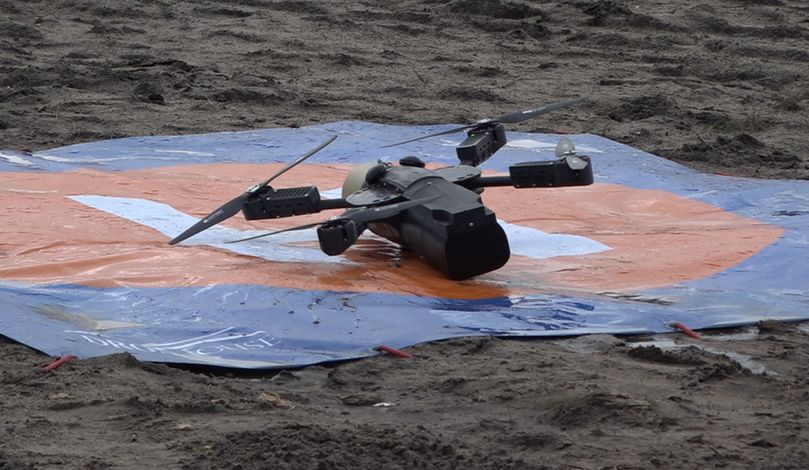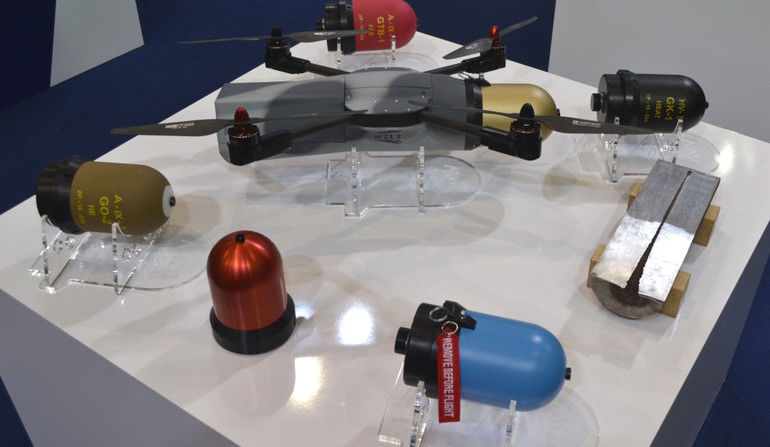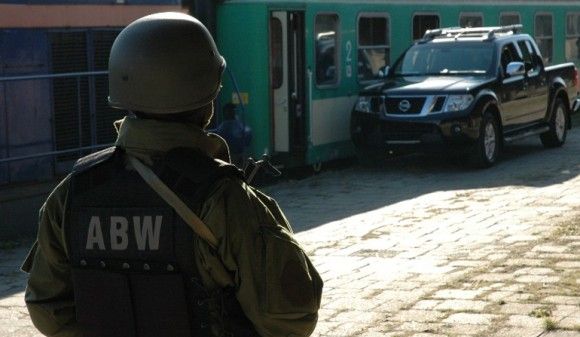Industry
Polish Armaments Group to Manufacture UCAVs
Polish Armaments Group (PGZ) is carrying out work, the goal of which is to initiate manufacturing process concerning the UAVs that would meet the requirements of the Polish Armed Forces, with a particular emphasis placed on the strike systems. The manufacturing process concerning the combat derivative of the DragonFly UAV is to begin in 2018, at the Bydgoszcz-based WZL Nr 2 (Military Aviation Works No. 2) facility, belonging to the PGZ Group. A Centre of Competency for UAV Systems has also been brought to life in Bydgoszcz.
In November 2016, a Centre of Competency for UAV Systems has been brought to life in Bydgoszcz, by the PGZ. Military Aviation Works No. 2 facility acts as the leader within the structure of the Centre.
The company in question is to act as the main manufacturer of drones, the production of which is going to take place in collaboration with companies such as PIT-RADWAR or PCO, also belonging to the Polish Armaments Group. Not only are the UAV systems in question going to be manufactured for the Polish Armed Forces, but also for other state entities, for the civil users or for the foreign customers.
The unmanned systems are the future, they are the future also in the Armed Forces. And now, it is a key issue to have a single facility, in the given group, in the given holding, which would remain capable of gathering, focusing all of the competencies of the individual facilities organized within that group. (...) These smaller UAVs may be now manufactured in Poland, at factories gathered within the Polish Armaments Group and at other facilities in Poland, namely located here, in our country, creating jobs here, in our country.
DragonFly strike UAV is the first system, the production of which is going to begin at the PGZ-owned facility. The design of this UAV has been developed at the Military Institute of Armament Technology, subordinated to the Polish Ministry of Defence. The production of the aforesaid drone was then divided between the facilities belonging to the PGZ. The license required to manufacture the platform itself has been obtained by the Military Aviation Works No. 2 facility (in late May this year). Meanwhile, warheads license has been obtained by the Bydgoszcz-based ZE Belma S.A. facility.
Quadcopter UCAV Designed by the Military Institute of Armament Technology
DragonFly UAV has been designed by the Military Institute of Armament Technology, as a response to the requirements of the Polish Armed Forces, concerning a multifunctional UAV platform which would complement the existing armament systems. It is a solution which has been designed primarily with special operations forces, air-mobile, mechanized or territorial defence units in mind.
The drone may also be easily used in urbanized areas as well. Its main purpose is to act against the enemy equipment, this includes the combat vehicles.
The Institute, which is a subsidiary body of the Polish MoD, has designed a quadcopter UAV which may be easily carried by a single operator. Its weight is 5 kilograms, and this includes the warhead. The UAV in question is capable of attaining speeds of more than 60 kilometres per hour, and it may continue its flight after hitting minor obstacles, such as tree branches or windowpanes.
Back in November last year, the UAV was demonstrated for the Head of the Polish Ministry of Defence, Antoni Macierewicz. In parallel, the Polish Armaments Group took the first steps towards initiation of production of the system and its certification. As a result of the undertaken actions, during the 11th edition of the International Air Fair 2017 expo organized in Bydgoszcz, a license agreement has been signed by and between the Zielonka-based Military Institute of Armament Technology and the Military Aviation Works No. 2 facility based in Bydgoszcz. The agreement concerned granting of a consent to manufacture and conduct steps related to further development of the DragonFly UAV design.
WZL No. 2 facility remains fully ready now to initiate production of the VTOL UAV in a training variant. UCAV version is going to enter production in 2018, a year after the system is certified. The operators would be trained at the “Bielik” Training Centre for Drone Operators, established by the Military Institute of Armament Technology in collaboration with the DronHouse company.
UCAVs will be fitted with a striking asset - the warhead. In case of the DragonFly system, a family of warheads has been created, with a purpose of acting against a variety of targets. Military Institute of Armament Technology has developed a platform-dedicated warhead package. Not only do the warheads integrate strike capabilities, as they also feature optronic sensors that are used by the operator to control the UAV, detect the threats and guide the UAV towards the target.
The warheads may be fitted with a TV or thermal vision camera, with the latter system offering an ability to carry out operations at night or against targets camouflaged in the visible light spectrum. Thanks to the target-tracking functionality utilizing the video camera, it is possible to strike the selected and locked-on targets also when communication with the operator is interrupted. For the purpose of ensuring the safety of use, the warheads may be armed and disarmed remotely.

The warheads family includes GO-1 HE-TP simulation and GO-1 HE-TR training warheads without a charge, utilized for the operator training purposes. The GO-1HE and GO-2HE high explosive, GTB-1FAE fuel-air explosive, and GK-1 HEAT high explosive anti tank (with penetration capability of 150-240 mm) warheads have been designed with combat purposes in mind.
Not only is the penetration ability of the latter warhead sufficient to act against APCs or IFVs, but it is enough to neutralize some tanks, if the top portion of the armour is hit. The warheads are of universal character - they may be used in other types of UAVs too. Military Institute of Armament Technology, simultaneously with granting the DragonFly manufacturing license for WZL-2, has also sold a license to manufacture warheads to another, Bydgoszcz-based company - Belma.
Belma facility belonging to the PGZ has signed a license agreement with the Military Institute of Armament Technology in May this year. The agreement guarantees Belma with exclusive right to manufacture training and combat warheads for the UAV systems. On the basis of the aforesaid agreement, the company will manufacture the GO-1 HE and GK-1 HEAT warheads (150-240 mm armour penetrating capability), as well as training and simulation varieties of the aforesaid ordnance (GO-1 HE-TR and GK-1 HEAT-TR; and GO-1 HE-TP and GK-1 HEAT T-P respectively).

Up until now, no decision has been made to initiate production of the fuel-air explosive warheads, but this issue remains open. The series manufacturing is to be implemented in parallel with initiation of manufacturing of the DragonFly UCAV - next year.
The programme related to production of the DragonFly UAVs and the associated warheads is a good example of collaboration established between a variety of entities supervised by the Polish Ministry of Defence. Both the UAV system, as well as the ordnance have been developed by the Military Institute of Armament Technology. Then, the manufacturing license has been granted to two state-owned companies: WZL No. 2 S.A. and Belma.
Within the framework of collaboration within the structure of the PGZ, the companies will have a chance to manufacture UAV systems for the Polish Armed Forces, or even for other users, including export customers. The production is to constitute a response to the requirements defined by the representatives of the Polish Armed Forces.
Last year, the Polish Ministry of Defence has been signalling its interest in procurement of a major quantity of small UAV systems, the purpose of which would be to attack ground targets. According to the declarations that had been made by the Polish Ministry of Defence, the aforesaid systems would be used both by the operational units, as well as by the newly formed Territorial Defence component.
The article above has been written on the basis of materials provided by the PGZ S.A. group.


